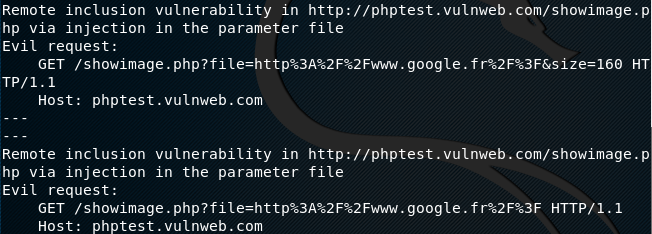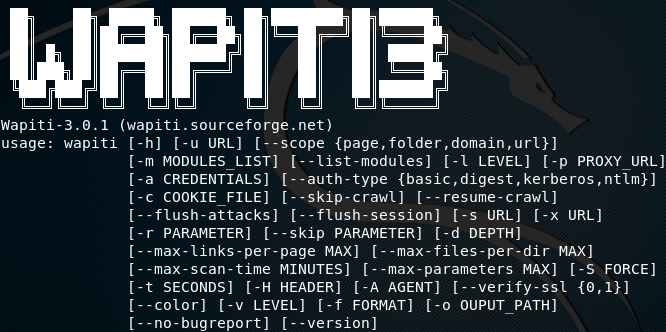Wapiti
is an open source tool that scans web applications for multiple
vulnerabilities including data base injections, file disclosures, cross
site scripting, command execution attacks, XXE injection, and CRLF
injection. The database injection includes SQL, XPath, PHP, ASP, and JSP
injections. Command execution attacks include eval(), system(), and
passtru() vulnerabilities.
Besides identifying the aforesaid vulnerabilities, Wapiti also
performs some addition penetration testing tasks, such as finding
potentially dangerous files on servers, finding configuration errors in
.httaccess files that can lead to security breach, and finding backup
copies of the applications on the server that could compromise the
security of said web applications if an attacker manages to get a hand
on those files. The results gathered are automatically stored in a html
file. The other supported file formats include .XML, .JSON, and .TXT.
Wapiti Installation

Wapiti requires Python 2.7.x or higher to operate. The other
dependencies include Python-requests, and Python-xml. To begin with
installation, first clone the tool from Github using the following
command.
https://github.com/IFGHou/wapiti
In the next step, run the setup.py file from wapiti directory using the following command.
cd wapiti
python3 setup.py install

How Wapiti Works
To scan your test web application for possible vulnerabilities, run the following command.
Python3 wapiti –u <web application>
Wapiti has dedicated modules for each type of vulnerability it scans.
Before scanning the target for any vulnerability, Wapiti enumerates the
links associated with the target web application. Once links are
enumerated, Wapiti runs each module one by one to test if the target web
application is vulnerable. The details found about vulnerabilities are
stored in a file, generated at the end of scanning. Wapiti has the
capability to resume any scan process if aborted in the middle.

The other features of the tool include support for HTTP and HTTPS
proxy, excluding unwanted urls from the scanning process, extracting the
urls from JavaScript and Shockwave Flash files, and support for
authentication.
If we run Wapiti on the following test website, it scans and displays the vulnerabilities instantly.
python3 wapiti –u http://phptest.vulnweb.com

The complete vulnerability report is generated and stored in the root folder as shown in the following screenshot.

The generated html report can be analyzed in a web browser. The
report shows all the results in a tabular format as shown in the
following format.

The details of vulnerabilities can be found by clicking on the listed vulnerability.
![Author Image]()









Aucun commentaire:
Enregistrer un commentaire